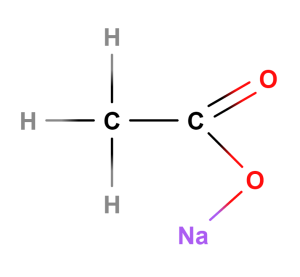HEALTH
What to eat if you have PCOS

Although there is no standard diet for PCOS, some strategies, such as an anti-inflammatory diet, can help manage PCOS.
Polycystic ovary syndrome involves a hormonal imbalance and metabolic disturbance. It affects 5-10% of women aged 15-44.
These changes can lead to the loss of authoritative sources.
ovarian cyst or tumor
Decreased or absent menstruation
Increased androgenic hormones
PCOS can lead to other serious health problems, such as diabetes, cardiovascular disease, depression, and an increased risk of endometrial cancer.
Some studies suggest that certain dietary choices may help reduce the effects of PCOS.
In this article, learn more about the foods to eat and the foods to avoid with PCOS.
How does diet affect PCOS?
The four main factors involved in the SOP are:
insulin resistance
Altered metabolism and hormonal function.
high levels of body fat
Problems producing gonadotropin-releasing hormones that are essential for reproductive health
All these factors are interrelated. Diet can be a factor in breaking this cycle and reducing the effects of PCOS. It can also reduce the risk of complications such as diabetes and cancer.
Some of the ways that diet can help PCOS patients are related to managing:
body weight
Insulin production and resistance
blood glucose level
Oxidative stress increases inflammation and cancer risk
More than half of people with PCOS develop diabetes or prediabetes before the age of 40. Diabetes results from the way the body processes insulin. Taking dietary steps to prevent diabetes is an important step in living well with PCOS.
What diet are you doing?
Although there is currently no standard diet for PCOS, it seems likely that different approaches will benefit people with this condition.
Here are three diets that can help control symptoms in people with PCOS.
Low glycemic index (GI) diet
Low GI foods are digested more slowly by the body. That means they don’t raise insulin levels as high or as fast as other foods, like sugar and highly processed carbohydrates.
Foods included in a low GI diet include:
whole grain
Legumes like lentils and beans
walnuts
seed
fruit
starchy vegetables
anti-inflammatory diet
An anti-inflammatory diet may help improve markers associated with PCOS, including hyperglycemia, body composition, hormonal imbalance, and cardiovascular risk.
Foods with anti-inflammatory properties include:
berry
greasy fish
leafy vegetables
extra virgin olive oil
Try this anti-inflammatory diet meal plan.
diet board
Doctors often recommend a high blood pressure (DASH) diet to reduce the risk and effects of heart disease, but it can also help manage PCOS.
The DASH diet is rich in:
fish
poultry
fruit
vegetable
whole grain
low fat dairy
A 2021 review found that the DASH diet may improve some features of PCOS. Examples include the appearance of ovaries or a decrease in the number of growths. It can also improve insulin resistance, blood sugar control, and fat deposition.
something to eat
Although these diets are different in some ways, they have many similarities.
All of this encourages fresh, whole foods and discourages highly processed foods and foods high in unhealthy fats and sugars.
Examples of foods that should be included in a PCOS-compliant diet include:
raw food
high fiber foods
Fatty fish like salmon, tuna, sardines, and mackerel
kale, spinach, and other dark leafy greens
Dark red fruits like red grapes, blueberries, blackberries, and cherries.
broccoli and cauliflower
Dried beans, lentils, and other legumes
healthy fats like olive oil and avocado
Nuts such as pine nuts, walnuts, almonds and pistachios
appropriate amount of dark chocolate
Spices like turmeric and cinnamon.
Weight control is probably beneficial for people with PCOS, regardless of their diet.
What are the healthiest vegetables?
Foods to Avoid
People with PCOS may benefit from avoiding foods that increase the risk of diabetes, cardiovascular disease, obesity, and other common health problems.
These include:
Refined carbohydrates, such as mass-produced pastries and white bread
Fried foods like fast food
Sugary drinks like sodas and energy drinks.
Processed meats like hot dogs, sausages, and luncheon meats
Solid fats such as margarine, shortening, and lard
Eating large amounts of red meat, such as steaks, hamburgers, and pork.
Foods high in added salt or sugar
Other highly processed foods
Other lifestyle tips
Lifestyle measures can also help control symptoms in people with PCOS. Studies show that the combination of diet and physical activity can have benefits such as:
weightloss
Improve insulin metabolism
more regular menstrual cycle
Low levels of male hormones and male pattern baldness
lower cholesterol levels
Research from authoritative sources also suggests that behavioral strategies can help people achieve their weight management goals. This helps control PCOS symptoms.
These practices include:
goal setting
social support network
self control techniques
take care of your mental health
Reducing stress through self-care practices, such as getting enough sleep, avoiding overexertion, and making time to relax, can also help manage PCOS.
when to see a doctor
Common PCOS symptoms include: Reliable sources:
Acne
increase in facial or body hair
hair thinning
weight gain
Darkening of the skin, especially in wrinkles, under the breast, and around the groin
irregular menstruation
Skin tags around the neck and armpits
hard to get pregnant
Anyone experiencing these symptoms should discuss their concerns with their doctor. Prompt treatment can help improve symptoms and prevent complications.
HEALTH
Unlocking the Secrets of ztec100.com: Your Gateway to Technological Advancement

Introduction of ztec100.com
Ztec100.com, In today’s rapidly evolving technological landscape, staying ahead of the curve is essential for businesses and individuals alike. One platform that has been at the forefront of driving technological advancement in it. This article will delve into the secrets behind this innovative platform and how it serves as a gateway to unparalleled technological progress.
History and Background ztec100.com
It was founded with a vision to revolutionize the way technology impacts our lives. Since its inception, it has achieved significant milestones, becoming a trusted name in the industry. With a rich history of innovation and forward-thinking leadership, it continues to shape the future of technology.
Services Offered ztec100.com
At ztec100.com, a comprehensive range of services is offered to cater to diverse needs. From software development to digital marketing solutions, specializes in delivering cutting-edge services that drive results and foster growth.
Technological Solutions ztec100.com
The hallmark of ztec100.com is its innovative technological solutions. Leveraging the latest advancements in AI, machine learning, and blockchain, it offers transformative solutions that revolutionize businesses across various industries.
Client Testimonials ztec100.com
The success of it is best reflected in the glowing testimonials of its satisfied clients. From small startups to multinational corporations, clients praise the reliability, efficiency, and effectiveness of ztec100.com’s services.
Collaborations and Partnerships ztec100.com
ztec100.com believes in the power of collaboration and has forged strategic partnerships with other leading companies. Through collaborative efforts, ztec100.com aims to push the boundaries of innovation and deliver unparalleled value to its clients.
Team and Expertise ztec100.com
Behind every successful venture is a dedicated team of experts, and ztec100.com is no exception. With a team of seasoned professionals and industry veterans, ztec100.com boasts unmatched expertise and a deep understanding of the technological landscape.
Customer Support and Satisfaction ztec100.com
Ensuring customer satisfaction is a top priority at it. With dedicated customer support and a commitment to excellence, it goes above and beyond to meet the needs of its clients and exceed their expectations.
Future Prospects and Developments
Looking ahead, it is poised for even greater success. With ambitious plans for expansion and a relentless pursuit of innovation, it is set to shape the future of technology in profound ways.
Competitive Advantage
What sets apart is its relentless pursuit of excellence and commitment to innovation. With a focus on delivering tangible results and exceeding client expectations, it stands out as a leader in the industry.
Case Studies
Real-life case studies showcase the real-world impact of it’s solutions. From streamlining business operations to enhancing customer experiences, these case studies highlight the transformative power of it’s services.
Industry Recognition and Awards
It’s contributions to the industry have not gone unnoticed, with numerous awards and accolades recognizing its excellence and innovation. These accolades serve as a testament to it’s commitment to pushing the boundaries of technology.
Security Measures and Data Protection
In an age where data security is paramount, It prioritizes the protection of its clients’ sensitive information. Robust security measures and stringent protocols ensure that data remains safe and secure at all times.1`
Accessibility is key, with a user-friendly interface that makes navigating the platform a breeze. Whether accessing services or seeking assistance, clients can easily engage with it in a seamless manner.
Conclusion
In conclusion, It stands as a beacon of innovation and progress in the world of technology. With a rich history of achievements, a commitment to excellence, and a relentless drive for innovation, ztec100.com is your ultimate gateway to technological advancement.
FAQs
- Is it suitable for small businesses? Absolutely! It offers tailored solutions for businesses of all sizes, ensuring that even small businesses can benefit from cutting-edge technology.
- How long does it take to see results with it’s services? The timeframe for seeing results can vary depending on the specific services and objectives. However, clients typically experience noticeable improvements within a reasonable timeframe.
- Is it’s customer support available 24/7? Yes, It’s dedicated customer support team is available round the clock to assist clients with any queries or concerns they may have.
- Can it integrate with existing systems and platforms? Absolutely! It specializes in seamless integration, ensuring that its solutions complement and enhance existing systems and platforms.
- Does it offer training and support for its services? Yes, it provides comprehensive training and ongoing support to ensure that clients can make the most of its services and technologies.
HEALTH
Understanding Pulsamento | A Rhythmic Journey to Wellness

Introduction to Pulsamento
pulsamento, In a world filled with constant motion and noise, finding moments of stillness and rhythm can be transformative. One such concept gaining attention is it, a rhythmic phenomenon that extends beyond its musical roots to influence various aspects of our lives. This article explores the essence of it, delving into its origins, scientific underpinnings, applications, and practical implications.
Understanding the Concept of Pulsamento
What is Pulsamento?
Pulsamento, derived from the Spanish word “pulsar” meaning to pulse or throb, refers to the rhythmic pulsation or heartbeat inherent in various phenomena. While commonly associated with music, it encompasses a broader spectrum, including biological rhythms, psychological patterns, and cultural expressions.
Origins and Background
The roots of pulsamento can be traced back to ancient civilizations where rhythmic rituals were central to communal activities. From tribal drum circles to synchronized chants, humans have long recognized the power of rhythm to unite, heal, and transcend.
The Science Behind Pulsamento
Biological Significance
At its core, pulsamento mirrors the innate rhythms of life, from the steady cadence of our heartbeat to the cyclic patterns of breathing and sleep. These biological rhythms not only regulate bodily functions but also influence our cognitive processes and emotional well-being.
Psychological Impacts
Studies have shown that exposure to rhythmic stimuli can modulate brain activity, leading to enhanced focus, relaxation, and emotional regulation. Whether through music, dance, or repetitive movements, it engages our senses and fosters a sense of coherence and connection.
Applications of Pulsamento
Health and Wellness
In the realm of health and wellness, pulsamento serves as a therapeutic tool for stress reduction, pain management, and rehabilitation. Techniques such as rhythmic breathing, drumming therapy, and mindfulness practices harness the power of this to promote holistic healing and resilience.
Music and Arts
In music and the arts, it transcends mere tempo and rhythm, shaping the expressive nuances of performance and composition. From the pulsating basslines of electronic music to the rhythmic brushstrokes of abstract painting, artists utilize this to evoke emotion, create tension, and convey meaning.
Technology
Innovations in technology have expanded the boundaries of this, with interactive devices and digital platforms offering new avenues for rhythmic exploration and expression. From wearable gadgets that sync with our heartbeat to immersive experiences that synchronize with ambient rhythms, technology enables us to engage with it in novel ways.
Pulsamento in Everyday Life
Enhancing Productivity
In the realm of productivity and efficiency, pulsamento serves as a catalyst for flow states and peak performance. By aligning tasks with natural rhythms and incorporating rhythmic breaks, individuals can optimize their workflow and sustain focus throughout the day.
Improving Creativity
In the creative process, its fuels inspiration and innovation, providing a rhythmic framework for exploration and experimentation. Whether through improvisational jam sessions or structured exercises, creatives leverage this to unlock new insights, patterns, and possibilities.
Stress Relief
Amidst the hustle and bustle of modern life, it offers a sanctuary of stillness and serenity. Mindful practices such as rhythmic breathing, meditation, and body percussion provide a rhythmic refuge, helping individuals unwind, recharge, and restore balance.
How to Incorporate Pulsamento into Your Life
Mindfulness Practices
Integrating pulsamento into mindfulness practices can deepen awareness, cultivate presence, and enhance overall well-being. Whether through rhythmic breathing exercises, walking meditations, or body scans, individuals can attune to the rhythmic cadence of their inner world and external environment.
Breathing Techniques
Rhythmic breathing techniques such as box breathing, coherent breathing, and resonance breathing synchronize inhalations and exhalations with natural rhythms, promoting relaxation, focus, and emotional equilibrium. By harnessing the power of this, individuals can regulate their autonomic nervous system and alleviate stress-related symptoms.
Creative Expression
Engaging in rhythmic activities such as drumming, dancing, or chanting unlocks the expressive potential of this, fostering spontaneity, connection, and joy. Whether solo or in community settings, creative practices grounded in pulsamento foster a sense of empowerment, belonging, and liberation.
Pulsamento in Cultural Context
Historical Significance
Throughout history, pulsamento has played a pivotal role in cultural rituals, ceremonies, and celebrations. From indigenous traditions to religious observances, rhythmic expressions have served as conduits for spiritual communion, communal bonding, and ancestral reverence.
Modern Interpretations
In contemporary culture, pulsamento continues to evolve and adapt, manifesting in diverse forms and contexts. From global music festivals to virtual dance parties, rhythmic experiences unite individuals across borders, languages, and identities, fostering solidarity, empathy, and collective consciousness.
Challenges and Misconceptions
Overcoming Obstacles
Despite its myriad benefits, incorporating this into daily life may pose challenges for some individuals. Whether due to hectic schedules, cultural barriers, or personal preferences, navigating obstacles requires patience, creativity, and adaptability.
Debunking Myths
Misconceptions surrounding this, such as its exclusivity to musicians or its irrelevance to non-western cultures, hinder its widespread adoption and appreciation. By debunking myths and demystifying its principles, we can promote inclusivity, accessibility, and cultural exchange.
Future Prospects of Pulsamento
Research and Development
As interest in pulsamento continues to grow, interdisciplinary research and innovation hold promise for advancing our understanding and application of rhythmic phenomena. From neuroscientific studies to technological advancements, ongoing exploration of this opens new avenues for healing, learning, and creativity.
Potential Innovations
Emerging technologies such as biofeedback devices, virtual reality experiences, and artificial intelligence algorithms offer exciting possibilities for expanding the scope and impact of this. By harnessing the power of data analytics, immersive simulations, and personalized interventions, future innovations have the potential to revolutionize how we engage with rhythm and wellness.
Conclusion
In conclusion, pulsamento offers a rhythmic journey to wellness, weaving together ancient traditions, scientific insights, and modern applications. Whether as a source of inspiration, a tool for transformation, or a beacon of connection, it invites us to tune into the rhythm of life and dance to the beat of our hearts.
Frequently asked questions
What distinguishes Pulsament from other types of rhythm?
Pulsamento emphasizes the recurrence of various impulses or vibrations and distinguishes it from continuous or irregular rhythms.
How is pulse used in Track Remedy?
Music therapists use the pulse to develop therapeutic interventions that promote calm, reduce tension, and increase emotional well-being.
What challenges are associated with the introduction of predominantly tap-based technologies?
Challenges include mitigating errors caused by resonance, ensuring synchronization in multiaspect systems, and managing inter-individual variability in healing responses.
Are there cultural versions within the interpretation of the Pulsament?
Yes, unique cultures interpret and use pulsation with specific methods, reflecting different perspectives on rhythm and resonance.
What function does the pulse play in the field of biomechanics?
In biomechanics, Pulsament is used to observe human movement patterns, muscle activation sequences and gait assessment and provides information on motor control and coordination.
HEALTH
Unveiling the Wonders of Acetatas | A Comprehensive Exploration

 In the wide range of chemical compounds, Acetatas stand out as fascinating and vital components with a wide range of possible applications. Our goal is to unravel the mysteries surrounding acetates and provide a comprehensive guide that not only educates, but eclipses existing content on the subject.
In the wide range of chemical compounds, Acetatas stand out as fascinating and vital components with a wide range of possible applications. Our goal is to unravel the mysteries surrounding acetates and provide a comprehensive guide that not only educates, but eclipses existing content on the subject.
Deciphering the intricacies of this is like unraveling a captivating puzzle. In this guide, we embark on a journey to explore the depths of acetates and illuminate their meaning, applications and implications. Join us in discovering the secrets and secrets behind acetates and leave no stone unturned in our search for knowledge.
1. What is Acetatas : everything you need to know
In the field of chemical compounds, Acetatas play a fundamental role and have a wide range of applications and implications. Essentially, acetates refer to a group of compounds characterized by the presence of the acetate ion. These compounds span a wide range, from pharmaceuticals to industrial solvents, each with their unique properties and uses.
Interesting paragraph:
At its core, Acetatas embodies versatility and utility and serves as a cornerstone in various industries. From their role in pharmaceutical formulations to their applications in chemical synthesis, acetates exhibit remarkable adaptability, making them indispensable components in numerous processes and products. Understanding the complexities of acetates reveals a world of opportunity where innovation and ingenuity come together to drive progress and prosperity.
2. Clarification of the origins of Acetatas
To truly understand the importance of Acetatas , it is important to trace their origins and evolution over time. Acetates date back to the beginning of chemical research and fascinate scientists and researchers with their unique properties and potential applications. From the groundbreaking experiments of renowned chemists to modern advances in synthesis and analysis, Ace-Tata’s journey is intertwined with the rich wealth of scientific discoveries.
Understanding Acetatas
What is this?
Acetates are esters or salts of acetic acid that are known for their versatility in various industries. These compounds have a remarkable range of applications, from the pharmaceutical industry to the food and beverage sector to the synthesis of polymers.
The role of Acetatas in industry
Pharmaceutical products
In the pharmaceutical world, Ace Tatas play a fundamental role as pharmaceutical middlemen. Due to their unique chemical properties, they are essential for the production of medicines and ensure effectiveness and stability.
Food and Drink
The food and beverage industry harnesses the power of acetate as a flavor enhancer and preservative. Dive into our exploration and discover how these compounds contribute to the tempting taste and longevity of your favorite consumer products.
Polymer synthesis
Polymer synthesis, a fundamental process in various manufacturing areas, benefits significantly from the incorporation of acetates. Their compatibility and reactivity make them invaluable for producing durable and versatile materials.
Types of Acetatas
Ethyl acetate
Among the large number of Acetatas , ethyl acetate stands out as a widely used variant. This section looks at its properties, applications and why it has become a cornerstone in numerous industries.
Properties
Ethyl acetate has a pleasant fruity aroma that distinguishes it from its chemical counterparts. Its low toxicity and high solubility in common solvents contribute to its widespread use.
Applications
From nail polish remover to medicine, the possible uses of ethyl acetate are diverse. Discover the countless ways this connection improves our daily lives.
The art of surpassing rank
Preparation of high-quality content
In the digital age, the battle for online visibility is fierce. To outperform existing articles on Acetatas , our approach goes beyond keyword density and encompasses the art of creating content that not only informs but also captivates.
Keyword integration
Strategically placing keywords related to Acetatas ensures that search engines see the relevance of our content. By seamlessly integrating these keywords into our narrative, we create authority and improve visibility.
Immerse yourself in the applications of Acetatas
State-of-the-art innovations
As the industry evolves, so do the applications of Acetatas . Discover breakthrough innovations that harness the potential of these compounds and pave the way for a future in which Acetatas plays an even more important role.
Case studies
Real-world examples show the impact of Acetatas in various sectors. Our in-depth case studies provide concrete evidence of the importance and effectiveness of these compounds, providing readers with valuable insight.
Frequently asked questions
What are the main applications of acetates in the pharmaceutical industry?
Acetates are typically used in pharmaceutical formulations to improve drug solubility and bioavailability, resulting in more effective treatments for various clinical diseases.
Are acetates harmful to the environment?
While some acetates may also have an impact on the environment, efforts are being made to develop biodegradable options that minimize ecological impact, thereby promoting sustainability and responsible use.
Can acetates be incorporated into the customer’s usual products?
Yes, acetates are found in numerous consumer products, including perfumes, cosmetics, paints and adhesives, where they contribute to scent, texture and functionality.
How are acetates synthesized in business approaches?
Acetates are generally synthesized through esterification reactions in which acetic acid reacts with alcohol in the presence of a catalyst to form the preferred ester compound.
Are there safety concerns associated with handling acetates?
As with any chemical compound, proper handling and storage procedures are important to ensure safety when handling acetates. It is important to follow recommended guidelines and precautions to limit risks.
What role do acetates play in the food business?
Acetates are used as flavor enhancers and perfume components in foods, contributing to the overall sensory pleasure and palatability of various culinary creations.
Conclusion
In Conclusion, our exploration of Acetatas has gone beyond the ordinary. We uncover the complexity of its properties, delve into its cross-industry applications, and demonstrate the strategic approach to surpass existing content.
-

 HEALTH2 years ago
HEALTH2 years agoDr. Naval Parikh: Thyroid Disease Signs, Symptoms & Treatment Options
-

 HEALTH2 years ago
HEALTH2 years agoDr. Naval Parikh: Back Injuries, Types, Causes, Symptoms and Treatment
-

 FASHION1 year ago
FASHION1 year agoBest Color Shoes for Men: Making a Style Statement
-

 TRAVEL1 month ago
TRAVEL1 month agomyfavouriteplaces.org:// Blog | Travel’s Best-Kept Secrets
-

 TECH2 years ago
TECH2 years agoHow to Turn Flashlight On iPhone & Off, 3 Easy Ways
-

 Celebrity2 years ago
Celebrity2 years agoDay 3 of Spring 2016 New York Fashion Week’s most inspiring
-

 GAMES2 years ago
GAMES2 years agoAbout Tekken 3
-

 APPS8 months ago
APPS8 months agoWhatsApp Web and Desktop: How do they work and how do you use them?
